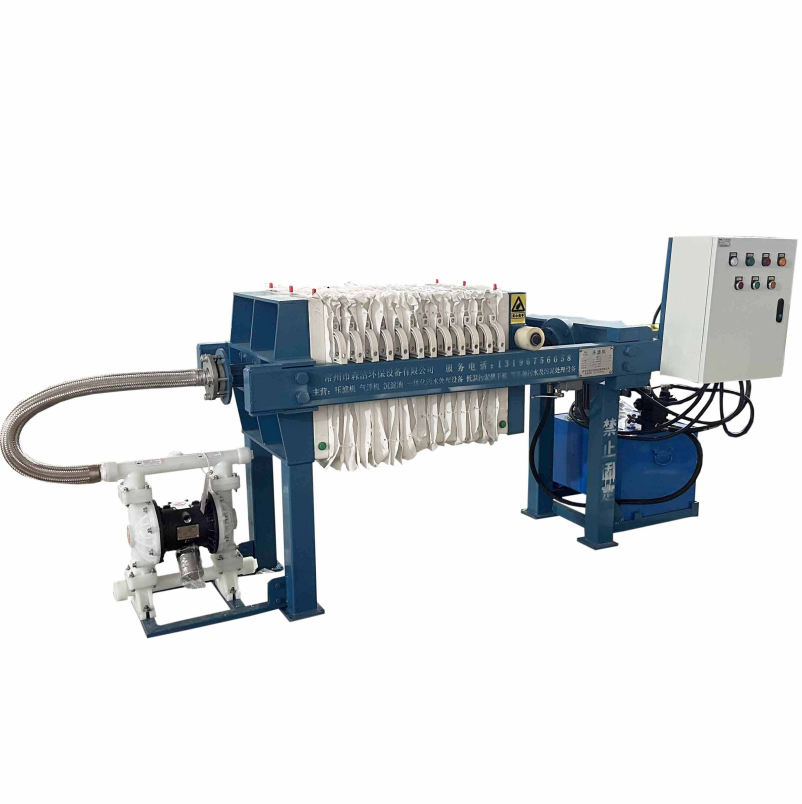The
Membrane Filter Press is a flow device that achieves
Solid-liquid Separation by applying external force to the filtered material. It is suitable for solid-liquid separation of various suspensions. It has the characteristics of good separation efficiency, safety, reliability, and easy operation. It is widely used in areas that require solid-liquid separation such as urban and rural domestic sewage treatment and disposal, as well as industrial
Wastewater Treatment.
Follow the
Filter Press source manufacturer Sudong to learn about the debugging of the hydraulic pump station:
(1) Jog the motor, control the running time within 3S, and ensure that the motor turns in the same direction as the external mark.
(2) Without feeding material into the filter press, first set the range of the press power contact pressure gauge to a minimum value of 2MPa and a maximum value of 5MPa (use gentle force when setting the pressure gauge to prevent damage to the pressure gauge), and turn on the high pressure The valve at the end is vented to the outside (stop immediately when the hydraulic oil is discharged. After pressing firmly, release it until the pressing plate reaches the limit, and then repeat the operation for the same number of times. Observe that the activation rod stops when the movement is stable, indicating that the cylinder has been No gas: After assembling the filter plate, the installation position error of the filter plate must be 5 mm. Once it exceeds this range, it will cause leakage of the corrugated plate and shorten its service life. Reset the electric contact pressure gauge range to 7MPasPs10MPa, press it firmly, and observe Machine condition under external force: Finally, adjust the range of the electric contact pressure gauge to 12MPaSP<14MPa. If everything is normal, you can prepare to feed. (Note: Due to different models, the pressure range of the oil cylinder is also different, but usually P 18MPa). After the hydraulic pump station is successfully debugged, the range of the pressure gauge should not be modified arbitrarily.
In addition, in order to make the hydraulic system operate stably and reliably, the oil temperature in the cylinder must be maintained at 10~40°C. If it exceeds, temperature adjustment measures must be taken.








